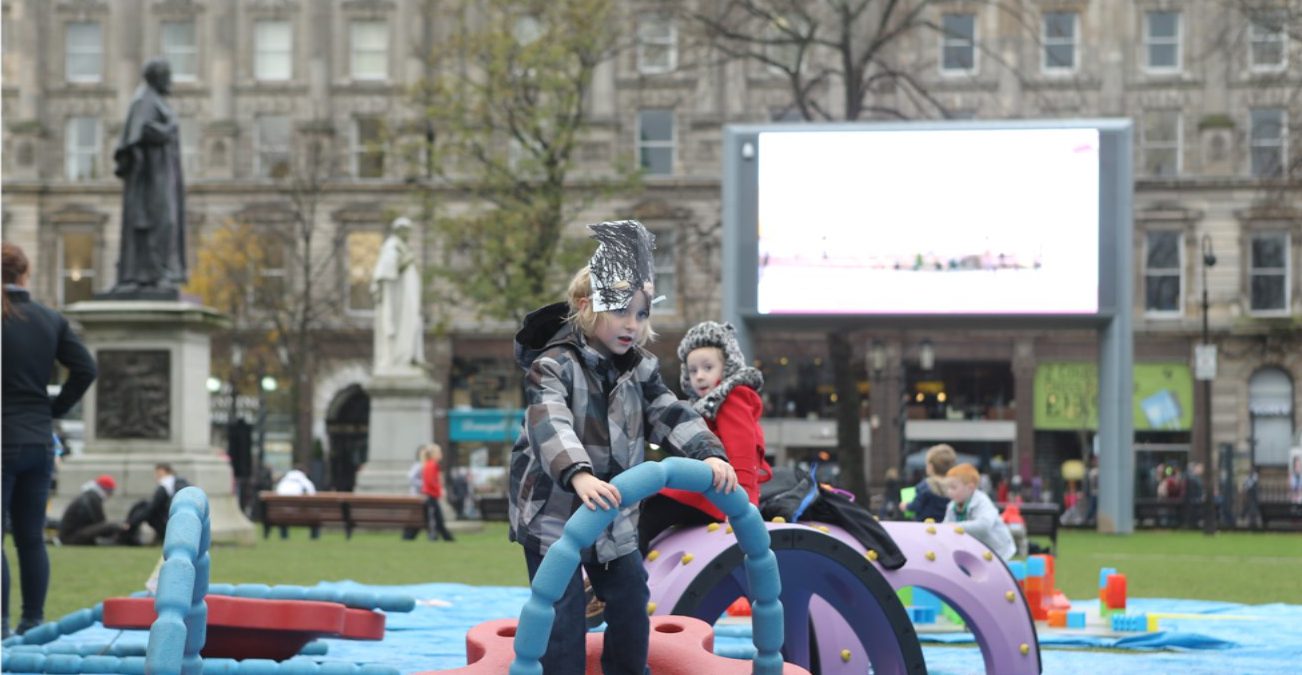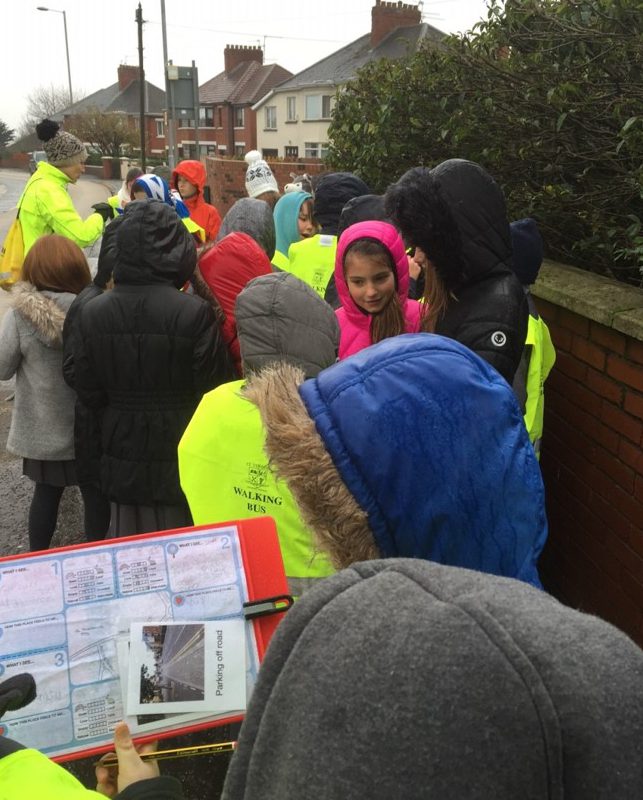
Keep up with our latest news and projects!

Taking Action for Child-Friendly Places is an inter-sectoral action plan based on extensive engagement with children across Belfast and is the first time such a focus has been put on children and the built environment in Belfast. A key driver for the Child-Friendly Places Programme was the United Nations Convention on the Rights of the Child, which establishes a right for children to both have access to a supportive environment and be heard in decisions that affect them. A review of the Northern Ireland policy also identified limited mechanisms for engaging children in decision making, especially for children aged under 13. About 7000 children and families were directly engaged with using innovative methods to identify priorities to create the action plan which sets out partners’ responsibilities under the following areas: Engaging and Empowering Children; Creating Healthier Places and Supportive Environments; and, Tools for Child Centred Spatial Planning and Design.
The first engagement model developed under the Plan, between 2011 and 2014, was Shaping Healthier Neighbourhoods for Children, a project which engaged 400 children through schools to explore their experience of their local environment. The model included class-based sessions exploring healthy environments, a walk in the local neighbourhood, where children photographed what they liked and did not like, and a final imagining session to share ideas, prioritise and visualise an agreed proposal. The Photovoice method was used to encourage and enable children of all abilities to participate, and the process resulted in presentations highlighting children’s ideas of how their local neighbourhood could become more child-friendly. Events were organised to give children the opportunity to present their ideas directly to senior policy and local government decision-makers. This was and remains a fundamental element of the Belfast approach to child-friendly places, which aims not only to increase understanding of children’s needs among planners but above all strengthen opportunities for children to directly influence decision making. On this project, collaboration with the Local Education Authority was critical in building relationships with schools and aligning the model with the National Curriculum.
In 2015, in response to feedback this model was developed into a dynamic Primary School teaching resource, in partnership again with the Education Authority, the Public Health Agency and Northern Ireland Housing Executive. This Healthy Places, Healthy Children resource has been piloted with over 20 schools and has resulted in numerous proposals, developed by children and presented to decision-makers, being brought to life. As this engagement tool embraces the principles of co-creation children have ownership of their outcomes.
 Children using the Healthy Places, Healthy Children resource to explore their local neighbourhood
Children using the Healthy Places, Healthy Children resource to explore their local neighbourhood
Creatively introducing child-friendly environments is also a key element of the Child-Friendly Places programme. The KidsSpace model is a pop-up child-friendly space, which explores how existing public space can become more child-friendly, and how this benefits regeneration, particularly in the city centre. KidsSpace has engaged with over 7,000 children and adults through 20 events since 2011 and has demonstrated the potential impact of small scale changes. Each free, accessible and staffed event allows for engagement with children and families, through props, art and informal conversation, around their priorities and ideas for child-friendly space in the City. Engagement particularly garnered children’s insights into improving open and green spaces, the city’s streets including empty spaces and, what a child-friendly city should feel like, as well as look like. Evaluation showed that a dedicated space is not required to make children feel like Belfast is their City too, simply more creative and interactive uses of the existing environment.
The KidsSpace model has influenced thinking in Belfast on programming space and impacts on the City at Eye Level criteria for Great Streets and Plinths around Programme Variety allowing for both temporary activity and physical and play opportunities for families.
Work is now focusing on integrating engagement with children in policy and decision making processes. This will ensure children can continue to express their views and influence decisions about their environment particularly in relation to the City at Eye level approaches to Street and Place i.e. user comfort, programme variety, visual quality, and walkability through designing and progressing projects to be active, interact and play, enjoy green space, visually enhance spaces, improve street safety and cleanliness and participate in a rich community life.
Belfast Healthy Cities and the Education Authority are now developing Healthy Places, Healthy Children into an online resource to enable schools across Northern Ireland to use this teaching and engagement tool. Belfast City Council is considering child-friendly elements in the regeneration of the city centre, and parks and areas of ‘meanwhile use’ i.e. temporarily empty spaces that can be used to maintain a city’s vibrancy across Belfast now run Family Fun days which incorporate elements of KidsSpace.
The Child-Friendly Places programme has developed two practical engagement models that have helped put children higher on the agenda of the built environment sector and provided a structured platform for dialogue between children and decision-makers.
As the methodology for developing and delivering both models has been validated through comprehensive evaluation these tools could be practically implemented across other cities. In consideration of learning, those adopting the Healthy Places, Healthy Children model should ensure: the teaching resource is adapted and introduced in partnership with relevant education authorities to secure full commitment from schools; appropriate relationships are in place to give children a voice to present proposals to the most relevant decision-makers; and, mechanisms are established to fully support children to progress their proposals and drive change in their own neighbourhoods.
This article belongs to a series of stories about the city at eye level for kids! You can access the full book online in PDF or pre-order your hardcopy to be delivered to your home.
Get your book here